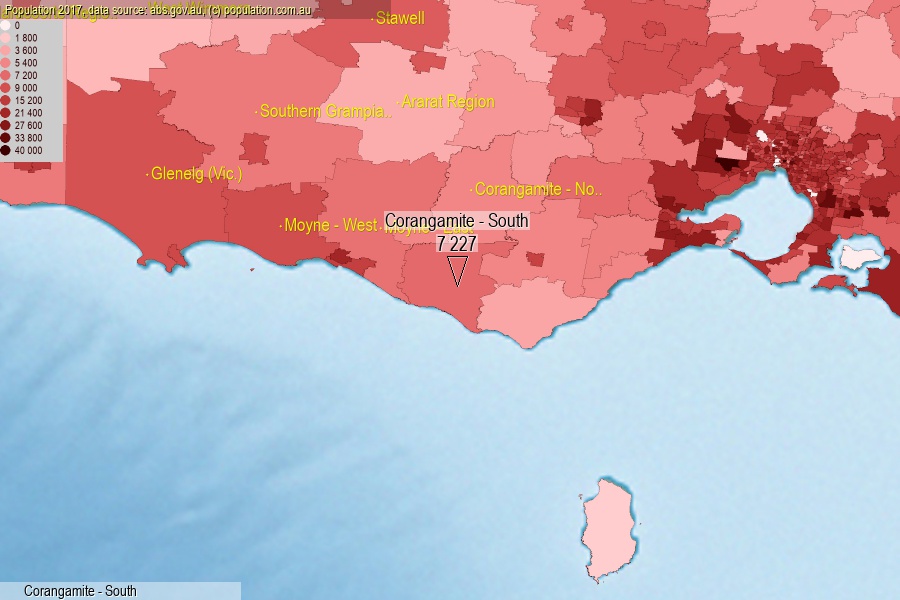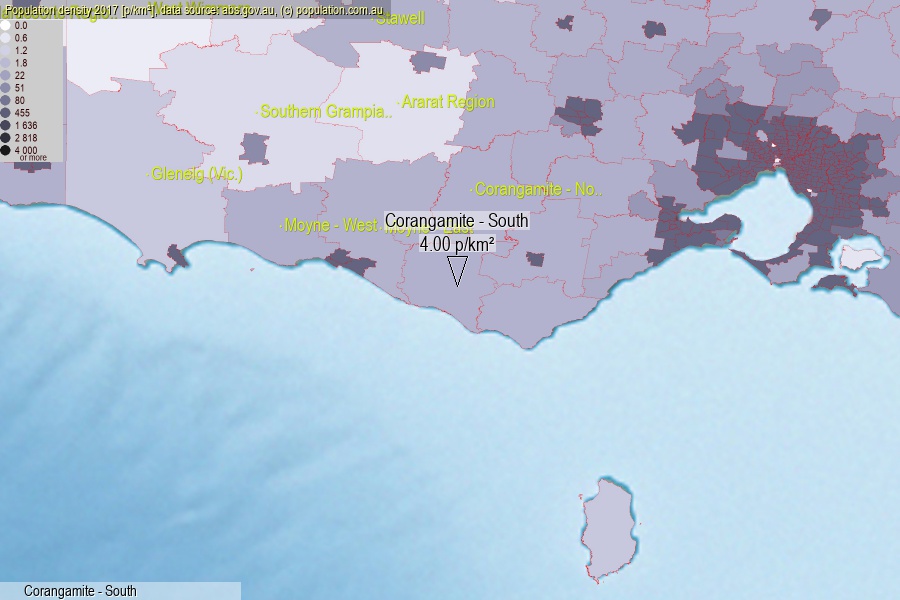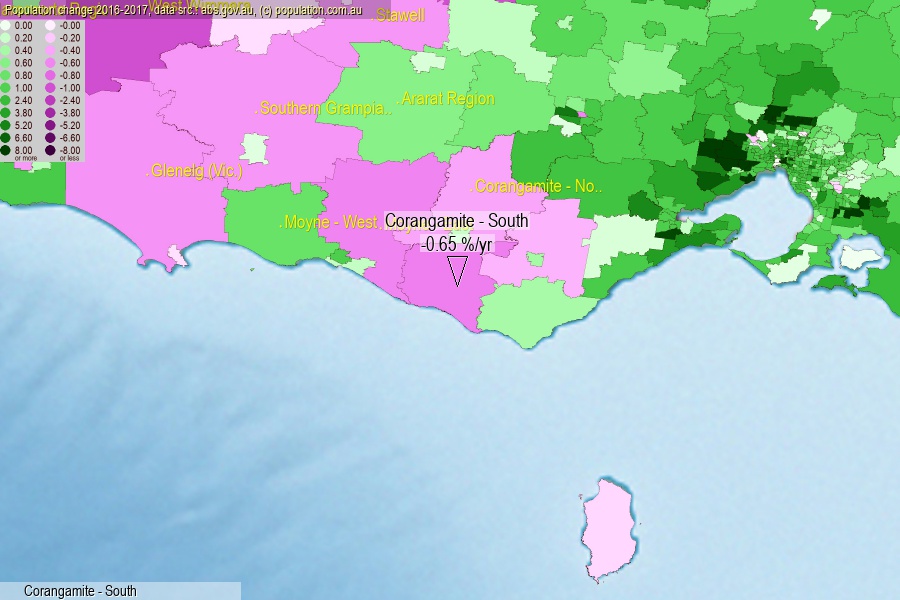 population.com.au
population.com.auLast official estimated population of Corangamite - South (as Statistical Area Level 2) was 7 227 people (on 2017-06-30)[2]. This was 0.03% of total Australian population and 0.112% of VIC population. Area of Corangamite - South is 1 805.20 km², in this year population density was 4.00 p/km² . If population growth rate would be same as in period 2016-2017 (-0.65%/yr), Corangamite - South population in 2025 would be 6 862. [0]



Click to enlarge. Corangamite - South is located in the center of the images.
Population [people], population density [p./km²] and population change [%/year] [2]
View borders » (new window) [4]
[2001-2002] -0.43 %/Yr.
[2002-2003] -1.27 %/Yr.
[2003-2004] -0.33 %/Yr.
[2004-2005] -0.70 %/Yr.
[2005-2006] -0.22 %/Yr.
[2006-2007] -0.73 %/Yr.
[2007-2008] -0.79 %/Yr.
[2008-2009] -0.71 %/Yr.
[2009-2010] -0.05 %/Yr.
[2010-2011] +0.33 %/Yr.
[2011-2012] -0.53 %/Yr.
[2012-2013] -0.83 %/Yr.
[2013-2014] -0.89 %/Yr.
[2014-2015] -0.81 %/Yr.
[2015-2016] -0.44 %/Yr.
[2016-2017] -0.65 %/Yr.
[0] Calculated with linear interpolation from officially estimated population
[1] Read more about SA2 and Australian Statistical Geography Standard (ASGS) on abs.gov.au
[2] Population data from Australian Bureau of Statistics (Population and density: 2017; change: 2016-2017)
[3] Digital Boundaries: Australian Statistical Geography Standard (ASGS) 2016.
[4] Border coordinates are simplifyed using Ramer-Douglas-Peucker algorithm.